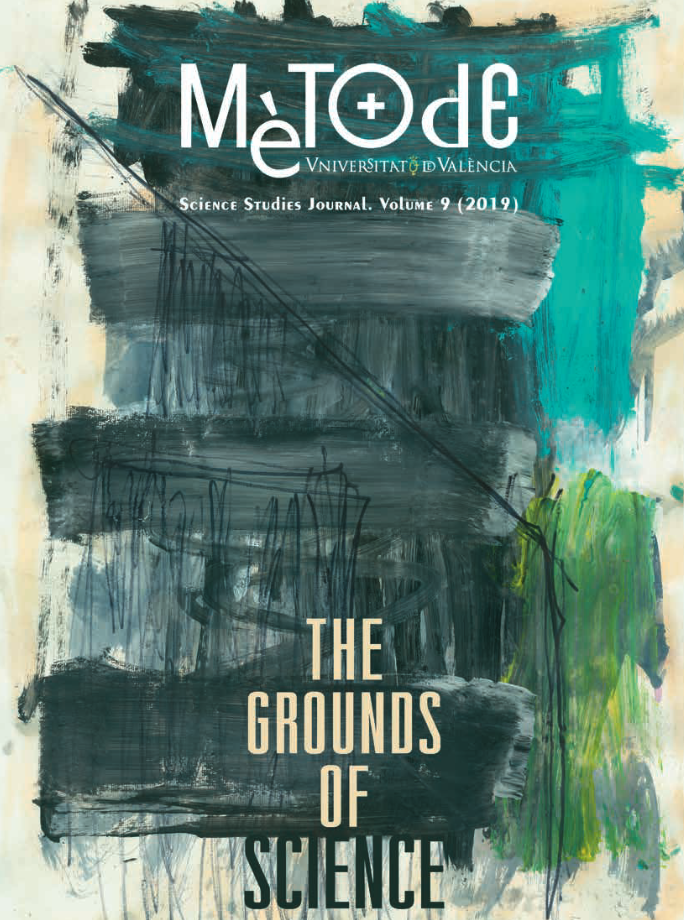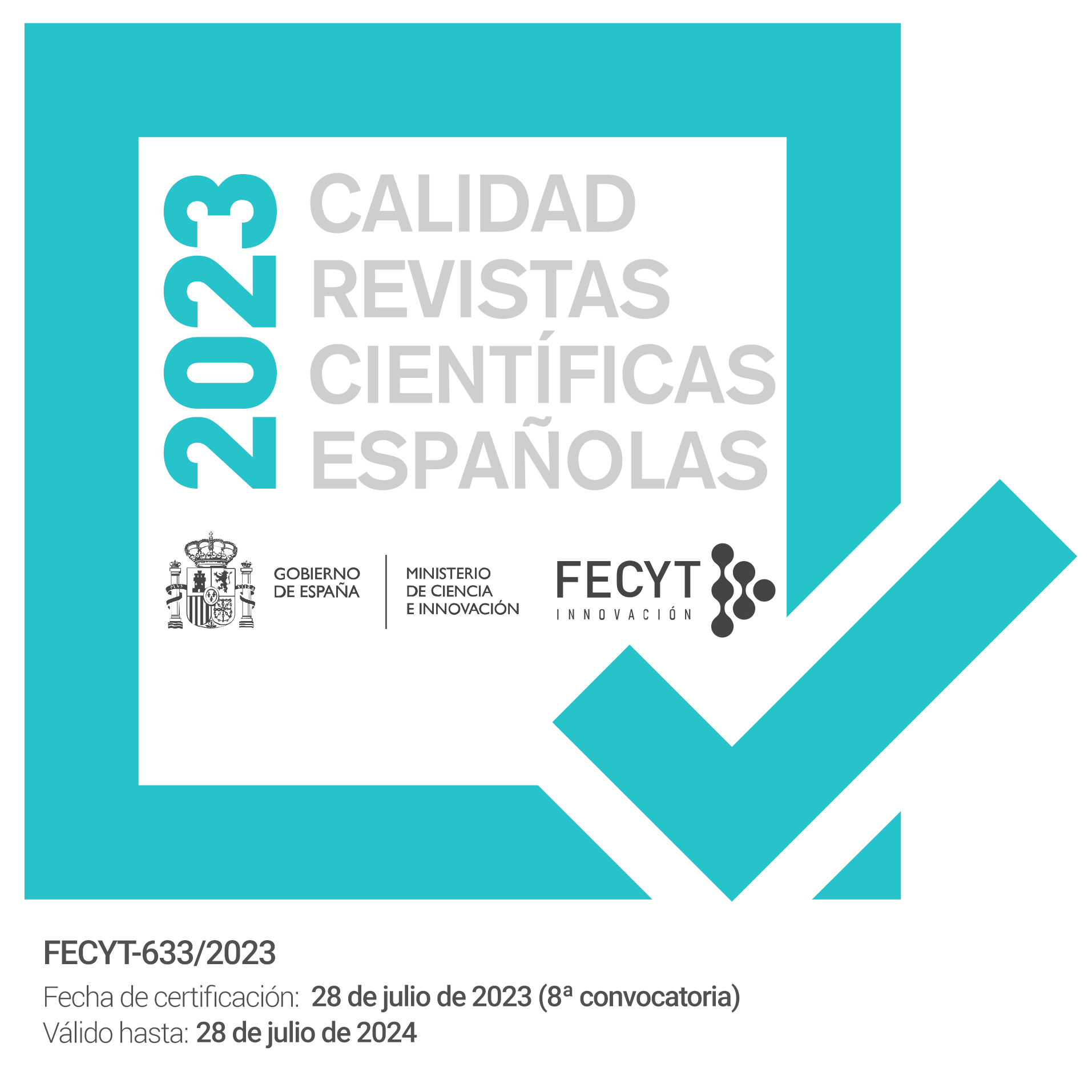La biotecnología, la comunicación y el público: Algunas claves para profundizar en la percepción social de la ciencia
DOI:
https://doi.org/10.7203/metode.9.11347Palabras clave:
biotecnología, comunicación, percepción pública de la ciencia, ingeniería genética, transgénicos Resumen
Resumen
Las aplicaciones más recientes en biotecnología permiten la modificación genética de una manera más rápida y económica que nunca. Mucha gente pide que se abra un debate público que incluya también las implicaciones sociales, culturales y éticas de estas aplicaciones biotecnológicas. Por otra parte, la información de que dispone la ciudadanía a veces es contradictoria, por lo que una comunicación que tenga en cuenta todos estos aspectos es importante y cada vez más necesaria. Por tanto, es prioritario profundizar en la comprensión de las actitudes públicas hacia la biotecnología.
 Descargas
Descargas
 Citas
Citas
Akin, H., & Scheufele, D. A. (2017). Overview of the science of science communication. In K. Jamieson, D. Kahan, & D. Scheufele (Eds.), The Oxford handbook of the science of science communication. New York: Oxford University Press. doi: 10.1093/oxfordhb/9780190497620.013.3
Anderson, A. A., Brossard, D., Scheufele, D. A., Xenos, M. A., & Ladwig, P. (2013). The «nasty effect»: Online incivility and risk perceptions of emerging technologies. Journal of Computer-Mediated Communication, 19(3), 373–387. doi: 10.1111/jcc4.12009
Brossard, D. (2012). Social challenges: Public opinion and agricultural biotechnology. In J. Popp, M. Jahn, M. Matlock, & N. Kemper (Eds.), The role of biotechnology in a sustainable food supply(pp. 17–28). New York: Cambridge University Press.
Brossard, D. (2013). New media landscapes and the science information consumer. Proceedings of the National Academy of Sciences, 110(3), 14096–14101. doi: 10.1073/pnas.1212744110
Brossard, D. (2014). Science, its publics and new media: Reflecting on the present and future of science communication. Mètode Science Studies Journal - Annual Review, 4, 193–197. doi: 10.7203/metode.80.3123
Brossard, D., Nesbitt, C., & Shanahan, J. (Eds.). (2007). The media, the public, and agricultural biotechnology.Cambridge, MA: CABI/Oxford University Press.
Brossard, D. & Nisbet, M. C. (2007). Deference to scientific authority among a low information public: Understanding U.S. opinion on agricultural biotechnology. International Journal of Public Opinion Research, 19(1), 24–52. doi: 10.1093/ijpor/edl003
Brossard, D., Scheufele, D. A., Kim, E., & Lewenstein, B. V. (2009). Religiosity as a perceptual filter: Examining processes of opinion formation about nanotechnology. Public Understanding of Science, 18(5), 546–558. doi: 10.1177/0963662507087304
Covello, V. T. (2010). Risk communication. In H. Frumkin (Ed.), Environmental health: From local to global(pp. 1099–1140). San Francisco, CA: Wiley.
Funtowicz, S. O., & Ravetz, J. R. (1992). Three types of risk assessment and the emergence of postnormal science. In S. Krimsky, & D. Golding (Eds.), Social theories of risk(pp. 251–273). Westport, CT: Greenwood.
Gould, F., Amasino, R. M., Brossard, D., Buell, C. R., Dixon, R. A., Falck-Zepeda, J. B., ... Whitaker, R. J. (2017). Elevating the conversation about GE crops. Nature Biotechnology, 35(4), 302–304. doi: 10.1038/nbt.3841
Ho, S. S., Brossard, D., & Scheufele, D. A. (2008). Effects of value predispositions, mass media use, and knowledge on public attitudes toward embryonic stem cell research. International Journal of Public Opinion Research, 20(2), 171–192. doi: 10.1093/ijpor/edn017
Kahan, D. M., Braman, D., Slovic, P., Gastil, J, & Cohen, G. (2009). Cultural cognition of the risks and benefits of nanotechnology. Nature Nanotechnology, 4(2), 87–90. doi: 10.1038/nnano.2008.341
Kunda, Z. (1990). The case for motivated reasoning. Psychological Bulletin, 108(3), 480–498. doi: 10.1037/0033-2909.108.3.480
Ma, H., Marti-Gutierrez, N., Park, S. W., Wu, J., Lee, Y., Suzuki, K., … Mitalipov, S. (2017). Correction of a pathogenic gene mutation in human embryos. Nature, 548, 413–419. doi: 10.1038/nature23305
Merriam-Webster, T. (2018). Biotechnology. In Merriam-Webster’s online dictionary. Retrieved from https://www.merriam-webster.com/dictionary/biotechnology
National Academies of Sciences, Engineering, and Medicine. (2016). Genetically engineered crops: Experiences and prospects. Washington, DC: The National Academies Press. doi: 10.17226/23395
National Academies of Sciences, Engineering, and Medicine. (2017). Human genome editing: Science, ethics, and governance. Washington, DC: The National Academies Press. doi: 10.17226/24623
Nature. (2017). Gene editing in legal limbo in Europe. Nature, 542, 392. doi: 10.1038/542392a
Pew Research Center. (2016). Smartphone ownership and Internet usage continues to climb in emerging economies but advanced economies still have higher rates of technology use. Washington, DC: Pew Research Center. Retrieved from http://www.pewglobal.org/2016/02/22/internet-access-growing-worldwide-but-remains-higher-in-advanced-economies
Reuters Institute. (2017). Digital news report 2017. Oxford: Reuters Institute for the Study of Journalism. Retrieved from https://reutersinstitute.politics.ox.ac.uk/sites/default/files/Digital%20News%20Report%202017%20web_0.pdf
Scheufele, D. A., Xenos, M. A., Howell, E. L., Rose, K. M., Brossard, D., & Hardy, B. W. (2017). U. S. attitudes on human genome editing. Science, 357(6351), 553–554. doi: 10.1126/science.aan3708
Yeo, S., Cacciatore, M., & Scheufele, D. (2015). News selectivity and beyond: Motivated reasoning in a changing media environment. In O. Jandura, T. Petersen, C. Mothes, & A. M. Schielicke (Eds.), Publizistik und gesellschaftliche Verantwortung(pp. 83–104). Wiesbaden: Springer.
Yeo, S. K., Xenos, M., Brossard, D., & Scheufele, D. A. (2015). Selecting our own science: How communication contexts and individual traits shape information seeking. The ANNALS of the American Academy of Political and Social Science, 658(1), 172–191. doi: 10.1177/0002716214557782
Descargas
Publicado
Cómo citar
-
Resumen2813
-
PDF 1119
Número
Sección
Licencia
![]()
Todos los documentos incluidos en OJS son de acceso libre y propiedad de sus autores.
Los autores que publican en esta revista están de acuerdo con los siguientes términos:
- Los autores conservan los derechos de autor y garantizan a Metode Science Studies Journal el derecho a la primera publicación del trabajo, licenciado bajo una licencia de Creative Commons Reconocimiento-NoComercial-SinObraDerivada 4.0 Internacional, que permite a otros compartir el trabajo con un reconocimiento de la autoría del trabajo y citando la publicación inicial en esta revista.
- Se permite y se anima a los autores a difundir sus trabajos electrónicamente a través de páginas personales e institucionales (repositorios institucionales, páginas web personales o perfiles a redes profesionales o académicas) una vez publicado el trabajo.





